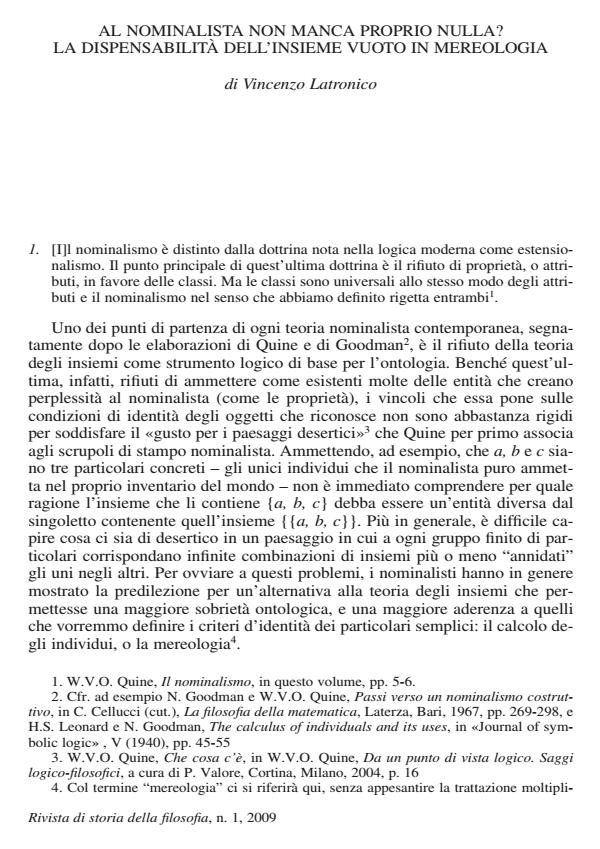Al nominalista non manca proprio nulla? La dispensabilità dell'insieme vuoto in mereologia
Journal title RIVISTA DI STORIA DELLA FILOSOFIA
Author/s Vincenzo Latronico
Publishing Year 2009 Issue 2009/1
Language Italian Pages 11 P. 63-73 File size 569 KB
DOI 10.3280/SF2009-001005
DOI is like a bar code for intellectual property: to have more infomation
click here
Below, you can see the article first page
If you want to buy this article in PDF format, you can do it, following the instructions to buy download credits

FrancoAngeli is member of Publishers International Linking Association, Inc (PILA), a not-for-profit association which run the CrossRef service enabling links to and from online scholarly content.
Al nominalista non manca proprio nulla? La dispensabilità dell’insieme vuoto in mereologia - Quine’s commitment to nominalism has always required set theory to be replaced by an ontologically less dubious tool for the analysis of predication, one that is usually ABSTRACT Rivista di storia della filosofia, n. 1, 2009 mereological in nature, akin to the Calculus of Individuals he and Goodman developed in a seminal paper on nominalism. The problem Quine himself always acknowledged as central in any such replacement arises with the mereological "translation" of numbers. I show here that Quine’s proposed translation strategy, even when successful, raises even more serious issues since it requires mereology to supply a substitute for the empty set. After proving the indispensability, given Quine’s translation, of such an entity, I demonstrate that an exact mereological replica of the empty set (the "null object") cannot be admitted without engendering contradictions. I conclude by discussing some paraphrases of the usual mereological axioms that prima facie might seem to be compatible with the null object and assessing their implausibility.
Vincenzo Latronico, Al nominalista non manca proprio nulla? La dispensabilità dell'insieme vuoto in mereologia in "RIVISTA DI STORIA DELLA FILOSOFIA" 1/2009, pp 63-73, DOI: 10.3280/SF2009-001005